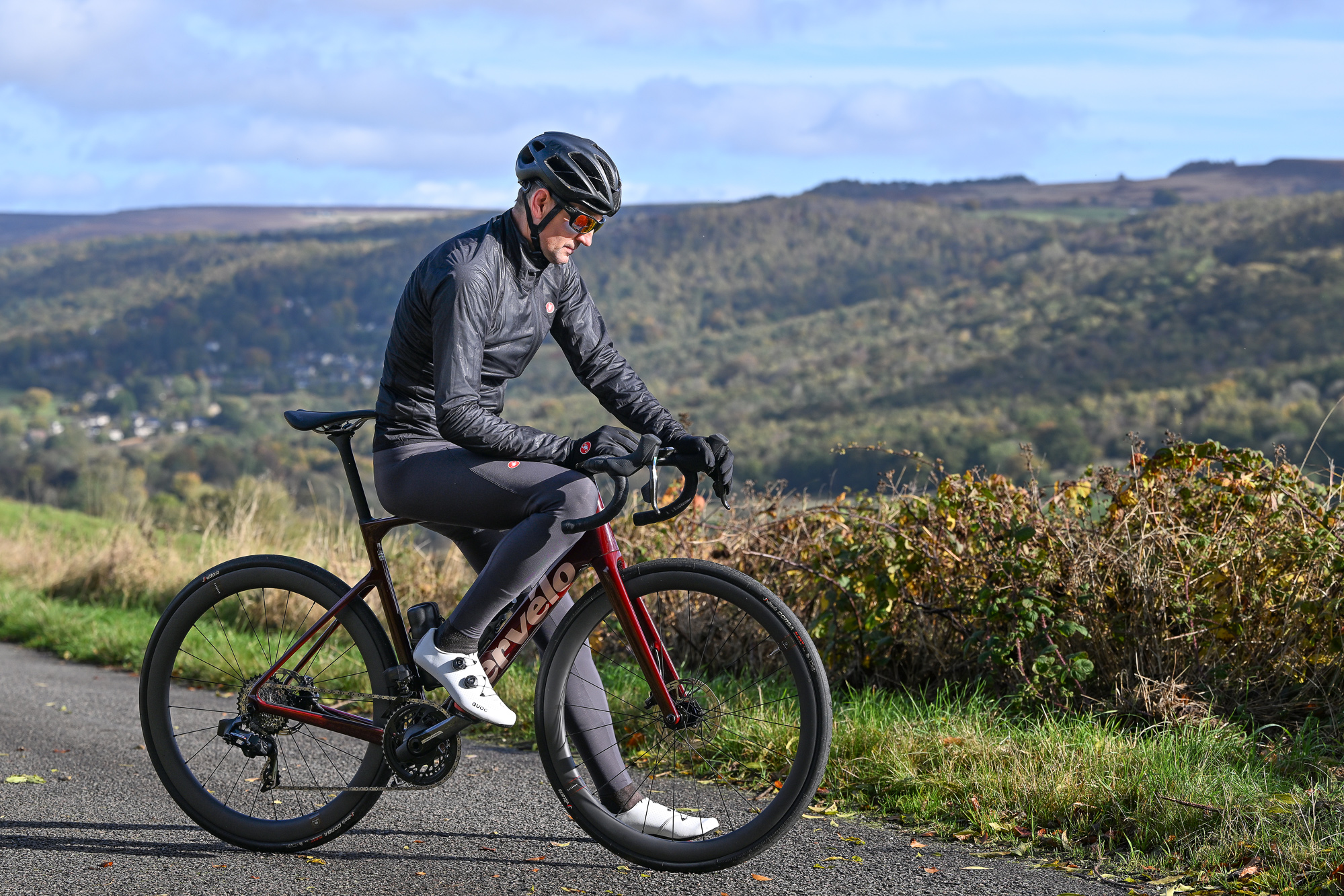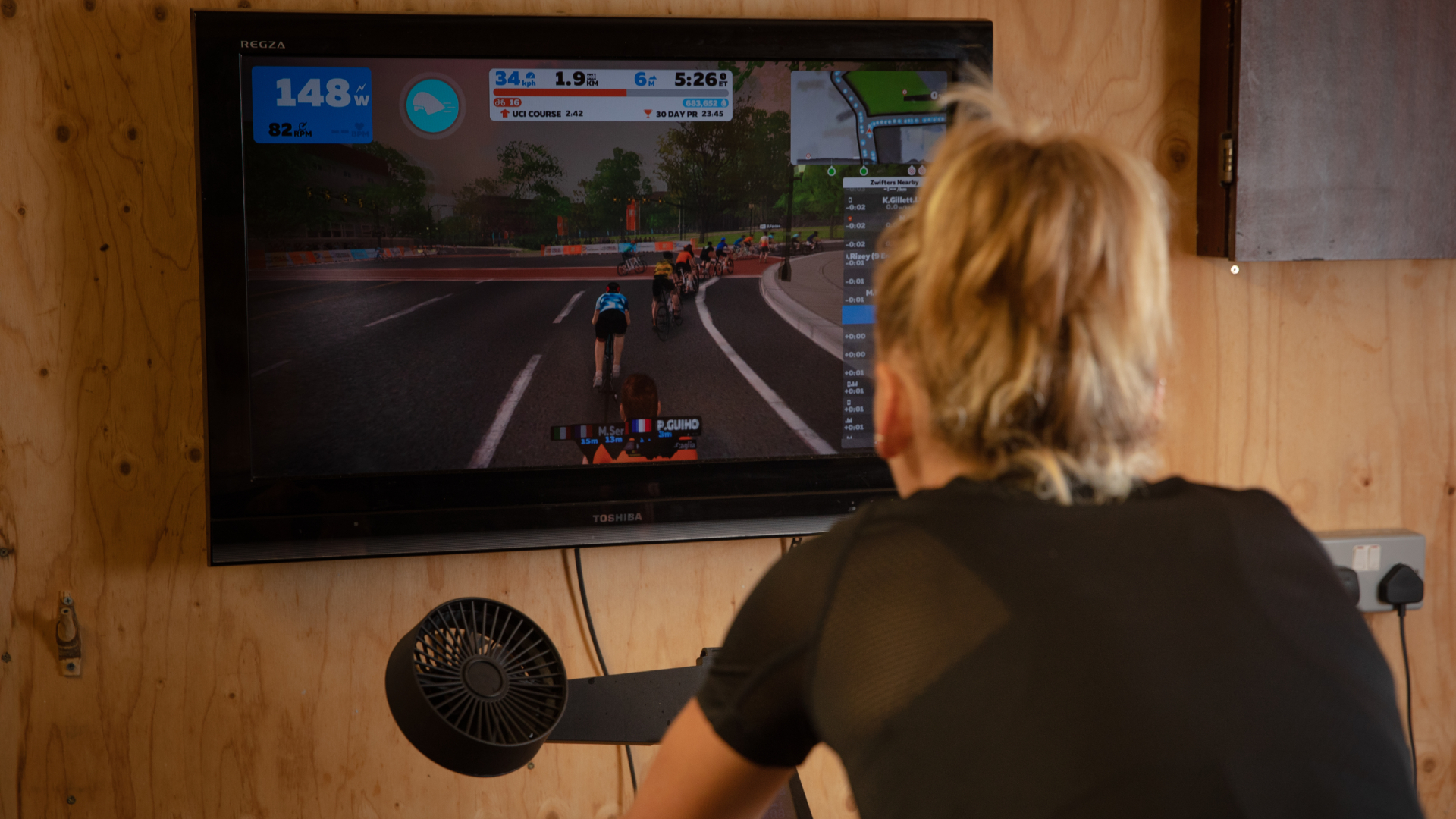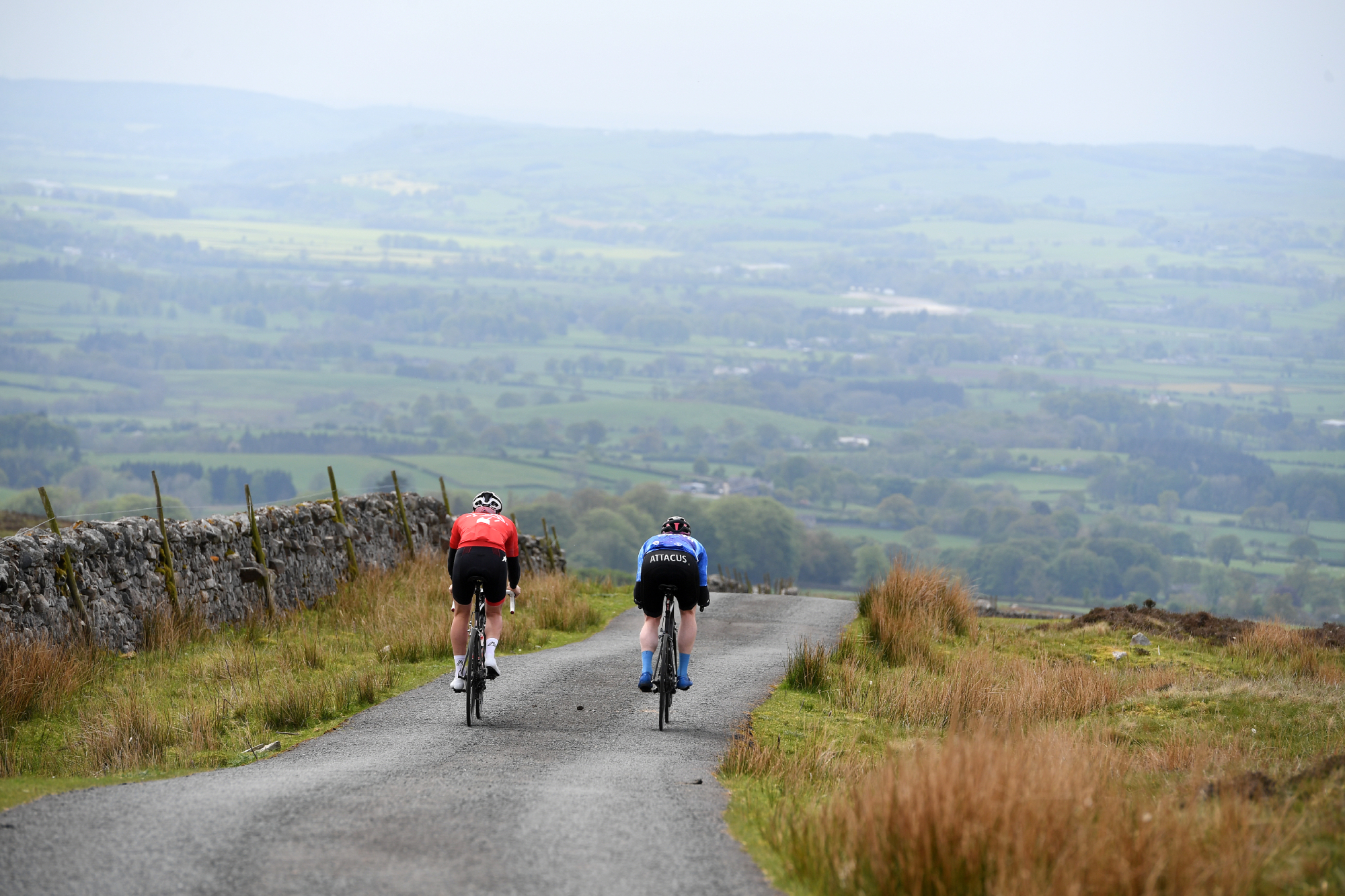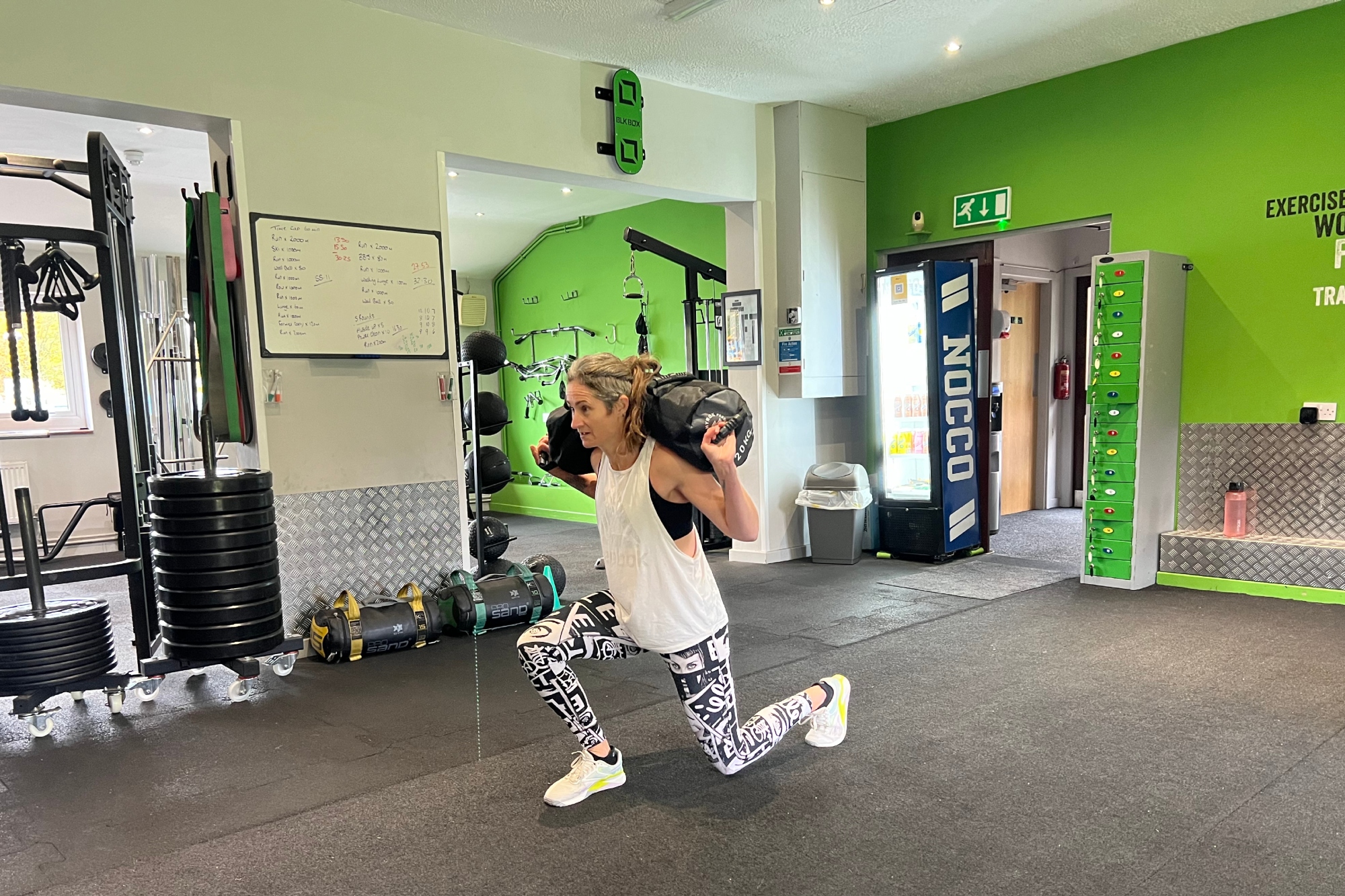
Dwindling daylight hours, work demands, family commitments and Christmas social events can all put a squeeze on the hours we’d like to spend in the saddle. As a 2023 survey by Mintel pointed out, one in four Brits cite ‘not enough time’ as the key reason for compromising on their pastimes. Meanwhile, a British Heart Foundation study found that, of the 40% of Brits who own a bike, three-quarters say they don’t ride as much as they’d like. Thankfully, with the following time-efficient workouts, strategies for integrating cycling into daily routines, and time-management tips, you can find ways to ride more, improve your fitness and make significant gains without sacrificing other important parts of your life.
Audit your life
“The first step I take with a client who says they want more cycling time – in preparation for an event, to improve their fitness, or just get more miles on the clock – is to carry out a lifestyle audit,” explains Paul Mill, cycle coach and founder of Elite Cycling (elitecycling.uk). “I ask them to assess their week – work, family, social commitments – so we can see how much time they have for training. Honesty here is crucial: if you overestimate your available hours, it’s not going to work. If someone says they have 20 hours to train but only have 10, I can’t prescribe the right plan.”
According to Mill, who has been training riders at all levels for over 25 years, once you’ve carried out that audit and got a realistic idea of how much time you have to ride, there are smart ways to shift the ratio in favour of cycling.
Smash a short sess

“Traditionally, endurance meant putting in long hours, but with limited time, we shift to high-intensity training as a shortcut to endurance,” explains Mill. “If someone has 20 hours a week to ride, their endurance will be better than someone with only four hours. But 20 hours isn’t realistic for most. My job is to maximise the benefits of the time they do have, while being careful, as high-intensity sessions can lead to burnout.”
The key point is that even a 30-minute interval session has a meaningful training benefit, especially if you accumulate 10 minutes or more at high intensities. Zwift has plenty of ready-made sessions of around 30 minutes in duration.
“Emily’s Short Mix is 30 minutes long, and is a varied workout consisting of three ramps,” suggests Chris Snook, former pro rider with Madison Genesis and now communications chief at Zwift.
“If you’re after something that’s both time-efficient and timely, the Loopin Lava route is one of the newest – the 18km route lap is Zwift’s retake on the original Jarvis map and finishes with a loop up the volcano. Or there’s the RoboPacer 24/7 group rides that are run at a variety of different paces – you can teleport between pacer groups using the action bar, allowing you to vary your intensities during the ride.”
Call a coach
“Getting fitter enables you to ride more while avoiding the fatigue and injury that would necessitate a break,” says Mill. It’s about juggling commitments with time in the saddle. “Using training programmes is fine but while artificial intelligence-driven training platforms like TrainingPeaks can give good sessions, they can’t gauge if you’re mentally or physically fatigued. As a coach, I assess the data, and more crucially, how clients feel. If someone is exhausted from commuting or family life, I adjust their plan, which AI can’t be relied on to do.”
Ride as you work
“Whenever I’m meeting a new work contact, one of the first questions I ask is, Do you ride?” says Jonathan Williams, health professional with workplace wellbeing consultancy Mindwork. “If the answer is yes then I suggest an hour’s chat and spin for our next meeting. The positive relationship vibes when you ride together are off the charts, and you can agree to the distance and intensity and use the cafe stop to seal any deals or smooth over any work issues.”
Commit to the commute

Commuting time counts as training time. “I don’t count it as serious training, though,” cautions Mill. “Commuting, especially in London, is just that – getting to work. It’s not fair to ask someone to go full intensity on their ride to work; they’re in no mental state to do that. We have to separate commuting from specific training.” However, that’s not to say you can’t combine your daily A-to-B with some serious training too.
If you’re training for a major event, a long-distance work commute is a great opportunity for getting in some base-building, as ultra rider and coach Jasmijn Muller confirms. “Ride to your work meetings and bring a change of clothes,” she says. “This is how I used to get a lot of my longer rides done while still working as a management consultant – even cycling from London to Wales.”
Workout from home
“Turbo trainers make it possible to get masses of training under your belt without leaving the house,” says Mill. “Over winter, this makes it easier to train consistently.”
Devon-based cyclist Gary Dunn reckons he adds an extra hour of cycling to his week by having his trainer always ready to use. “I have one bike permanently strapped into the [smart] trainer so I can be riding at any spare moment. Also, my IRL [in real life] bike is always ready to go – just regularly check your tyres and chain condition and you’re ready to roll.”
Spread the load
“I use an Excel spreadsheet to track progress and predict upcoming rides,” says Dunn. Using the ‘Goal Seek’ function in Excel, Dunn sets a target mileage, which automatically adjusts every time he updates it with his latest ride data. “For example, last week I rode about 30km more than I’d allocated for that week - so this week the target figure has adjusted and I have fewer, shorter rides to do. I check my updated target in the morning, decide whether to ride indoors or outdoors, then scroll through my Strava history for rides that match the distance.”
Build a buddy network

For British Army warrant officer Steve Burnell, the demands of his job leave him little time for cycling. “Having a buddy system is crucial to making sure you get out and train,” says Burnell, who recently completed LEJOG for the Royal British Legion. “‘Battle buddies’ will hold you accountable for training, and this relationship is a great motivation on days when you’re not ‘feeling it’ for the planned activity – especially in wet weather.”
A slightly more ad hoc approach is to set up a WhatsApp group with cycling friends. “They’ll drop me a line if they’re going out for a ride near me and I’ll do the same for them,” says Gary Dunn. “It’s often a good kick to get out rather than stay on the indoor trainer. Once you’re cycling with mates, you want to ride more and ride harder.”
Kit on, excuses out

“Put on your cycling kit in the morning – it locks in your intention to get a training session in that day,” suggests Jasmijn Mueller. “You’re more likely to get it done if you are dressed for it.”
Don’t put off today…
“One minute today equals three minutes tomorrow,” explains Cliff Arnall, psychologist and timemanagement specialist. “Prepping your drinks, checking your tyres and checking the forecast will take three times longer tomorrow than it does today.” Rushing around immediately before a ride is likely to cause delays.
“Faffing is a private psychological game, low-level gambling where we unconsciously test ourselves to see how long we can delay before needing to do something,” adds Arnall. “One of the best, and cheapest, time management techniques is just getting it done right now.”
Call time on faffing
A very common time-stealing habit is faffing about. “This could be spending too long getting ready to leave the house for a ride, playing video games for way too long or watching mindless TV late at night when you really ought to be fast asleep,” suggests Arnall. “Getting a simple countdown timer – rather than using your phone or watch – will pay you back handsomely in extra time, saving hundreds of pounds and resulting in a calmer attitude.”
He suggests allotting a fixed amount of time to each task. “Decide how long you think these activities will take or how much time you are willing to spend doing them and then set it on the countdown timer. When it starts bleeping or flashing, it’s time to stop. Over several days of regular use, this will develop into a fantastic new habit so that eventually you won’t need the timer.”
Wash ’n’ go

“I always try to clean the bike as soon as I get home, especially in winter,” says Scott Mitchell, who earlier this year cycled across 43 UK counties in a week, a Guinness world record. “Yes, it’s cold, but another five minutes hosing it down when it’s already wet and filthy saves a lot of time trying to deal with it later. Having the bike ready to go prevents a lot of procrastination, one of the reasons people stay on the sofa.”
Holiday by bike
Does your family want a beach holiday while you want to be out riding? Why not please everyone by combining culture, food, water parks and relaxation with awesome rides? Check out tour operators such as epicroadrides.com and Elite Training Holidays.
Compress those crunches

You can streamline off -bike training with techniques like supersets, EMOMs, and TUTs, says Joe Warner, fitness editor and author of New Body Plan (newbodyplan. co.uk). Supersets pair two exercises back-to-back with no rest, targeting opposing muscle groups (e.g. biceps and triceps) or the same group (e.g. pull-ups and push-ups) for intensity. “This cuts down rest time, raises your heart rate and makes your workout more effi cient and metabolically demanding,” says Warner.
EMOMs (every minute on the minute) involve completing a set number of reps at the start of each minute, resting for the remainder. For example, do 10 pull-ups in 30 seconds, then rest for 30 seconds before repeating.
Finally, TUTs (time under tension) use slow movements to maximise muscle strain, improving strength and size. For example, in TUT squats, you lower for three seconds and rise for three seconds. These methods enhance results in less time.
Remove barriers and banish excuses
Chris Snook, former elite rider with Madison Genesis, now squeezes in training around his busy job as PR director at Zwift.
“As someone juggling work and childcare, I’ve found that the most efficient way to squeeze in a ride is to jump on the indoor trainer. During Covid, I switched to a smart-bike, and it’s been a complete game changer – no need to fit or swap bikes, which removes that mental barrier. Excuses? Gone.
“I still try to get outdoors whenever I can. One thing I keep reminding myself is to organise my kit. Hunting for a missing arm-warmer is a waste of precious minutes. Planning sessions is another lifesaver. Whenever I have a spare moment, I’ll add routes to ‘My List’ [on Zwift] so when it’s time to ride, my session is ready to go. Having a plan in place keeps you focused. Oh, and don’t forget to charge your GPS and shifter batteries!
“Setting goals has been key for me, too. It keeps me accountable and helps me get into a routine. Whether it’s a new badge, a race, or a fitness milestone, having something to work towards makes a huge difference. Finally, find a group of friends to ride with – one of the most enjoyable parts of cycling. Virtual racing has been a great way for me to connect with friends and colleagues during the week. On the weekends, though, I still love nothing more than riding out to a great cafe for coffee and cake.”
This article was originally published in Cycling Weekly magazine. Subscribe now and never miss an issue.







